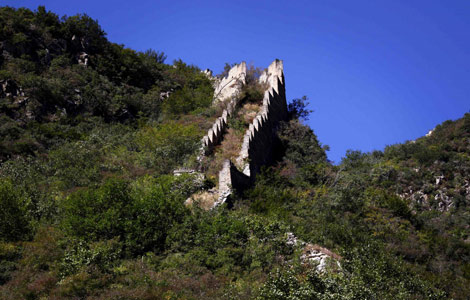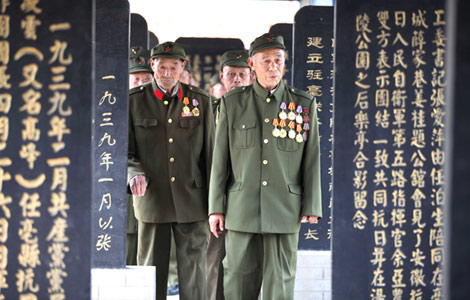Gradual changes taking place amid bumper harvest
Updated: 2012-10-14 08:32
By Li Xiaokun (China Daily)
|
||||||||
![Harvesting by machines is cheaper, but hand-picked cotton is of better quality and cotton pickers will probably keep their jobs for a while. [Photo by Polat Niyaz/for China Daily] Gradual changes taking place amid bumper harvest](../../attachement/jpg/site1/20121014/0023ae9885da11e4471c03.jpg) |
|
Harvesting by machines is cheaper, but hand-picked cotton is of better quality and cotton pickers will probably keep their jobs for a while. [Photo by Polat Niyaz/for China Daily] |
To help make the transition, the cotton this year has been planted with spacing to make the crop easier to harvest by machines.
"All the 40 mu (2.67 hectare) of cotton fields I take care of are picked by machines. That saves me more than 200 yuan per mu," says Yue Xinli, an employee of the division.
One cotton-picking machine can usually handle the workload of 500 cotton workers. It can even replace 1,000 human pickers during peak times.
The XPCC, which grows about 506,000 hectares of the 1.65 million hectares of cotton fields in Xinjiang, can harvest 333,333 hectares of cotton using machines. Using the machines is expected to save up to 1 billion yuan this year, the XPCC says on its website.
But Lang Yongqi, who grows 18.9 hectares of cotton fields for Hu Zhaoguang, says the quality of machine-picked cotton can "by no means be compared to those picked by hand".
"Cotton picked by the hand is very clean. Those picked by machines is dirty, mixed with many impurities that degrades the cotton. The machines can save labor costs initially, but more people have to be employed later to clean up the stock," Lang says.
Still, improving technology is addressing these concerns. Regiment 143 invested 38 million yuan this year to upgrade its production line, improving the quality of ginned cotton significantly, the XPCC says.
For the moment, cotton pickers are still highly valued among many cotton growers scattered in the vast Xinjiang region. As of Sept 20, nearly 300,000 pickers have made the trip to Xinjiang, with more to come in the following days, local authorities report.
But it's still not enough for smaller farmers like Zhang Yanhong from Bole city in northwest Xinjiang. He has been recruiting cotton pickers for more than one week at a railway station in Urumqi - the most popular way for small-sized farms to find labor during cotton-picking days.
"It's hard to find pickers here this year, as most of the farmers have come with contracts. The pickers are also asking for too much, usually above 2.2 yuan per kilo. We cannot afford that. And they would rather wait for ones who can afford them."
Under XPCC guidelines this year, the rate for cotton pickers has been set at 1.7 yuan per kg of cotton. Xinjiang's Development and Reform Commission on Sept 24 put the reference price for unginned cotton at 8.46 yuan per kg.
The Agriculture Division 13 in Hami prefecture in east Xinjiang has also arranged two special trains to send more than 3,000 pickers from Qi county, in Central China's Henan province. The division has set up cooperation programs with Henan, Ningxia Hui autonomous region and Chongqing municipality. Its cooperation with Qi county started nine years ago.
"This is the largest such program in our division's history," says Li Xinwen, director of the division's job center.
Under the program, many cotton pickers experienced what was possibly their first police escort when they traveled to the farms as part of transport security. The Urumqi Railway Bureau says more than 100 such trains have arrived in Xinjiang from various areas since mid September, arranged by the XPCC and some local governments.
Li Jianjun, head of the Department of Social Labor Management under the XPCC's Social Security Bureau, says all the pickers employed by the XPCC have contracts to ensure their interests and security.











